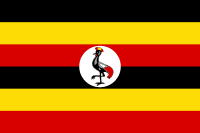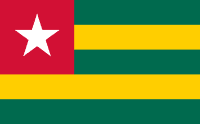 List of Licensed Insurance Companies & Brokers in Egypt. Explore the Leading Insurance Companies in Egypt (قائمة شركات ووسطاء التأمين المرخصة في مصر. استكشف شركات التأمين الرائدة في مصر)
List of Licensed Insurance Companies & Brokers in Egypt. Explore the Leading Insurance Companies in Egypt (قائمة شركات ووسطاء التأمين المرخصة في مصر. استكشف شركات التأمين الرائدة في مصر)
Discover everything you need to know about Egypt’s insurance sector. From full-service general insurers to top-rated life, health, and specialty risk providers, this page offers a curated list of the most reliable and well-established insurance companies operating in Egypt. You’ll also find key financial institutions and regulatory authorities that influence the Egyptian insurance market. Whether you’re protecting your family, your health, your property, or your business, our comprehensive guide helps you compare options and choose the best coverage for your needs.
Directory of Insurance Companies in Egypt
دليل شركات التأمين في مصر
Browse our up-to-date directory of top insurance providers in Egypt. Easily filter by insurance type—such as: General and life insurers, Health insurance providers, Specialty insurers and global reinsurers, Insurance brokers and risk advisors, Other financial institutions (banks), Industry associations, Other financial institutions (motor clubs), or Government plans and entities.—to find the right company for your needs. Click on each insurer’s logo to access detailed information, including their services, specialties, and a direct link to their official website.
- All Insurers
- General & Life Insurers
- Health Insurance Providers
- Specialty Insurers & Global Reinsurers
- Insurance Brokers & Risk Advisors
- Other Financial Institutions (Banks)
- Government Schemes & Entities
- Retirement Savings
Frequently Asked Questions About Insurance in Egypt
الأسئلة الشائعة حول التأمين في مصر
Navigating the insurance landscape can be complex. Here are answers to some common questions about insurance in Egypt to help you make informed decisions.
1. How to choose the best insurance company in Egypt?
1. كيف تختار أفضل شركة تأمين في مصر؟
Choosing the best insurance company in Egypt depends largely on your individual or business needs. Consider these key factors:
- Assess Your Needs: First, identify what you need to insure (e.g., car, health, life, property, business).
- Reputation and Solvency: Research the company’s reputation, financial stability, and track record for claims settlement. Look for companies licensed by the Financial Regulatory Authority (FRA) of Egypt.
- Coverage & Policy Terms: Compare the specific coverage offered across different providers. Pay close attention to policy terms, exclusions, deductibles, and limits.
- Customer Service: Evaluate their customer service, responsiveness, and ease of communication (e.g., 24/7 support, online services).
- Price vs. Value: Don’t just pick the cheapest option. Ensure the premium offers adequate protection and good value for money.
- Network (for Health Insurance): For health insurance, check if your preferred hospitals, clinics, and doctors are within their network.
- Broker Assistance: Consider consulting an experienced insurance broker. They can help you compare multiple options, understand complex policies, and assist with claims.
2. What types of insurance are available in Egypt?
2. ما هي أنواع التأمين المتوفرة في مصر؟
The Egyptian insurance market offers a wide array of insurance products catering to various needs. Common types include:
- Life Insurance: Provides financial protection to beneficiaries upon the insured’s death, or pays out a sum after a certain period or upon reaching a specific age.
- Health Insurance (Medical Insurance): Covers medical expenses, including hospital stays, doctor visits, surgeries, and medication. Both individual and group policies are available.
- Motor Insurance (Car Insurance):
- Mandatory Third-Party Liability: Legally required for all vehicle owners, covering damages and injuries to third parties.
- Comprehensive Insurance: Optional, covering damages to your own vehicle due to accidents, theft, fire, and sometimes natural disasters, in addition to third-party liability.
- Property Insurance: Protects homes, businesses, and their contents against risks like fire, theft, and natural perils. Includes homeowners, renters, and commercial property insurance.
- Travel Insurance: Covers medical emergencies, trip cancellations, lost luggage, and other unforeseen events during travel.
- Business/Commercial Insurance: A broad category including:
- General Liability Insurance: Covers claims for bodily injury or property damage caused by business operations.
- Professional Liability Insurance (Errors & Omissions): Protects professionals against claims of negligence or mistakes in their services.
- Product Liability Insurance: Covers claims arising from defective products.
- Marine Insurance: Covers goods in transit by sea, air, or land.
- Engineering Insurance: Covers construction projects and machinery.
- Takaful Insurance: Sharia-compliant insurance based on mutual cooperation and shared responsibility (see next FAQ).
3. Is health insurance compulsory in Egypt?
3. هل التأمين الصحي إلزامي في مصر؟
Yes, health insurance is increasingly becoming compulsory in Egypt, as the government implements the Universal Health Insurance System (UHIS).
- Universal Health Insurance System (UHIS): Law No. 2 of 2018 established the UHIS, aiming to provide comprehensive health coverage to all Egyptian citizens. This system is being rolled out gradually across governorates, with mandatory enrollment for all residents.
- Phased Implementation: The UHIS is implemented in phases across different governorates, with the goal of covering the entire population by 2032.
- Employer Obligations: Employers are generally required to contribute to the UHIS for their employees.
- Private Health Insurance: While UHIS is mandatory, many individuals and companies, especially expatriates and those seeking higher quality or broader coverage, opt for private health insurance plans to supplement or enhance the public system’s offerings.
4. What is Takaful insurance?
4. ما هو التأمين التكافلي؟
Takaful insurance is a form of insurance that adheres to Islamic (Sharia) principles. It differs from conventional insurance in several key aspects:
- Cooperation and Mutual Assistance: Takaful is based on the concept of mutual cooperation and solidarity. Participants contribute to a common fund (tabarru’ fund) with the intention of helping each other in times of need.
- Absence of Interest (Riba) and Gambling (Maysir): Takaful policies avoid elements prohibited in Islam, such as interest (riba) on investments and excessive uncertainty or gambling (maysir).
- Ethical Investments: The funds collected are invested in Sharia-compliant assets and activities.
- Surplus Sharing: If there is a surplus in the fund after paying claims and managing expenses, it may be distributed among the participants as a dividend, unlike conventional insurance where profits go to shareholders.
- Managerial Fee (Wakalah or Mudarabah): The Takaful operator (company) manages the fund and is compensated through a fixed fee (Wakalah model) or a share of the surplus/profit (Mudarabah model).
Takaful insurance provides a Sharia-compliant alternative for individuals and businesses seeking financial protection while aligning with their religious beliefs
Explore other insurers in the region
World Insurance Companies Logos and Insurers by Country



























































 Mali Insurance – World Insurance Companies Logos. Click on the insurance company logos to get a wealth of up-to-date information for each insurer. We want to help you get the best assurance.
Mali Insurance – World Insurance Companies Logos. Click on the insurance company logos to get a wealth of up-to-date information for each insurer. We want to help you get the best assurance. 

 List of Insurance Companies Logos and Names in Zimbabwe – World Insurance Companies Logos. Clicking on the logo of each insurance company, one can obtain a series of updates of the information that each insurer offers over the Internet.
List of Insurance Companies Logos and Names in Zimbabwe – World Insurance Companies Logos. Clicking on the logo of each insurance company, one can obtain a series of updates of the information that each insurer offers over the Internet.

 List Of Insurance Companies Logos And Names In Zambia – World Insurance Companies Logos. By clicking on the logo of each insurance company, one can obtain a set of update information that each insurer offers via the Internet.
List Of Insurance Companies Logos And Names In Zambia – World Insurance Companies Logos. By clicking on the logo of each insurance company, one can obtain a set of update information that each insurer offers via the Internet.

 List of Insurance Companies Logos and Names in Djibouti – World Insurance Companies Logos. By clicking on the logo of each insurer in DJIBOUTI can obtain a set of update information that each insurer is offered by the Internet.
List of Insurance Companies Logos and Names in Djibouti – World Insurance Companies Logos. By clicking on the logo of each insurer in DJIBOUTI can obtain a set of update information that each insurer is offered by the Internet.

 List of Insurance Companies Logos and Names in Uganda – World Insurance Companies Logos. By clicking on the logo of each insurer, one can obtain a set of update information that each insurer offers via the Internet.
List of Insurance Companies Logos and Names in Uganda – World Insurance Companies Logos. By clicking on the logo of each insurer, one can obtain a set of update information that each insurer offers via the Internet.

 Tunisia, Africa – World Insurance Companies Logos. By clicking on the logo of each insurance company, one can obtain a set of update information that each insurer is offered via Internet.
Tunisia, Africa – World Insurance Companies Logos. By clicking on the logo of each insurance company, one can obtain a set of update information that each insurer is offered via Internet.

 Togo, Africa – World Insurance Companies Logos. By clicking on the logo of each insurance company one can get a set of updates of the information that each insurer is offered by the Internet.
Togo, Africa – World Insurance Companies Logos. By clicking on the logo of each insurance company one can get a set of updates of the information that each insurer is offered by the Internet.